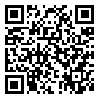BibTeX | RIS | EndNote | Medlars | ProCite | Reference Manager | RefWorks
Send citation to:
URL: http://jdisabilstud.org/article-1-2994-en.html
2- Associate Professor, Department of Psychology, Faculty of Social Sciences, Razi University, Kermanshah, Iran
3- Assistant Professor, Department of Psychology, Faculty of Social Sciences, Razi University, Kermanshah, Iran
Abstract
Background & Objectives: One of the most common clinical disorders in children is anxiety disorders. Various psychological factors affect anxiety. The presence of anxiety disorders in childhood and adolescence significantly increases the probability of having an anxiety disorder in adulthood. One of the factors related to anxiety disorders is trait anxiety and intolerance of uncertainty. Although emotion–oriented cognitive behavioral therapy has recently been developed for the treatment of children's anxiety disorders, less research has been devoted to it compared to the emotion–oriented cognitive behavioral treatment of adults. Thus, this research was conducted to investigate the effectiveness of an emotional–oriented cognitive behavioral therapy group on uncertainty intolerance and trait anxiety in anxious children.
Methods: The research method was quasi–experimental, with a pretest–posttest, follow–up design, and control group. The research population included all the female students in the second year of elementary school (fourth to sixth grade) who studied in the elementary schools of Kahrizak District, Tehran Province, Iran, in the academic year 2020–2021. According to Kehrizak Department of Education statistics, this district has 78 primary schools, of which 45 were rural and 33 urban schools. In the academic year of 2020–2021, the number of female students in the second year of elementary schools in Kehrizak district was 4561, of which 2463 students studied in urban schools and 2098 students in rural schools. The population of female students by grade included 1533 in the fourth, 1548 in the fifth, and 1480 in the sixth. Finally, a sample of 672 students completed the questionnaires, the people whose score on the Spielberger Trait Anxiety Scale (1973) was at least 2 standard deviations higher than the average (in the present study, the average trait anxiety was 31.58 and the standard deviation was 6.24) and met at least one of the criteria of anxiety disorders in the clinical interview, were invited to the study. Considering the inclusion and exclusion criteria, including the parents' consent to participate in the research, the subject's non–referral to a psychiatrist and psychologist, and the consumption of psychiatric drugs in the three months before the start of the intervention and during the intervention, 30 subjects who met the criteria had the necessary qualifications to enter the research, were randomly assigned to two groups of emotional–oriented cognitive behavioral therapy and control (each group includes 15 people). It should be mentioned that the number of samples was calculated according to the number of groups (2 groups), the power of the test as 0.80, the effect size of 0.40, and the confidence level of 95%. Finally, 12 students were calculated for each group, taking into account a 20% chance of drop. So, the sample consisted of 30 participants (15 students in each group). This research used the Intolerance of uncertainty Questionnaire (2020) and Spielberger Trait Anxiety (1973). Also, the emotional–oriented cognitive behavioral therapy group included 16 therapy sessions. Every week, 2 treatment sessions were held for the experimental group. The control group did not receive any treatment until the end of the study. Data analysis was done using analysis of variance with repeated measures and post hoc tests in SPSS software version 25. Bartlett's, Levene's, and Mauchly's sphericity tests were used to check the assumptions of variance analysis with repeated measurements. The significance level of statistical tests was considered 0.05.
Results: The average age distribution of the participants in the experimental group was 10.87 with a standard deviation of 0.899 years, and the average age of the participants in the control group was 10.83 with a standard deviation of 0.577 years. The results showed that emotion–oriented cognitive behavioral therapy for the experimental group reduced trait anxiety and intolerance of uncertainty compared to the control group (p<0.001). Also, the results showed a difference between pre–test and posttest intra–group scores in trait anxiety variables (p=0.003) and intolerance of uncertainty (p=0.002). There was no difference between the posttest and the follow–up in the trait anxiety and intolerance of uncertainty scores. In other words, the intervention in the experimental group had a stable effect on the posttest and follow–up over time.
Conclusions: Based on the research findings, emotion–focused cognitive–behavioral therapy affects intolerance of uncertainty and trait anxiety; according to this evidence, the use of emotion–focused cognitive–behavioral treatment for emotional disorders in clinical work with anxious children is recommended.
| Rights and permissions | |
 |
This work is licensed under a Creative Commons Attribution-NonCommercial 4.0 International License. |




